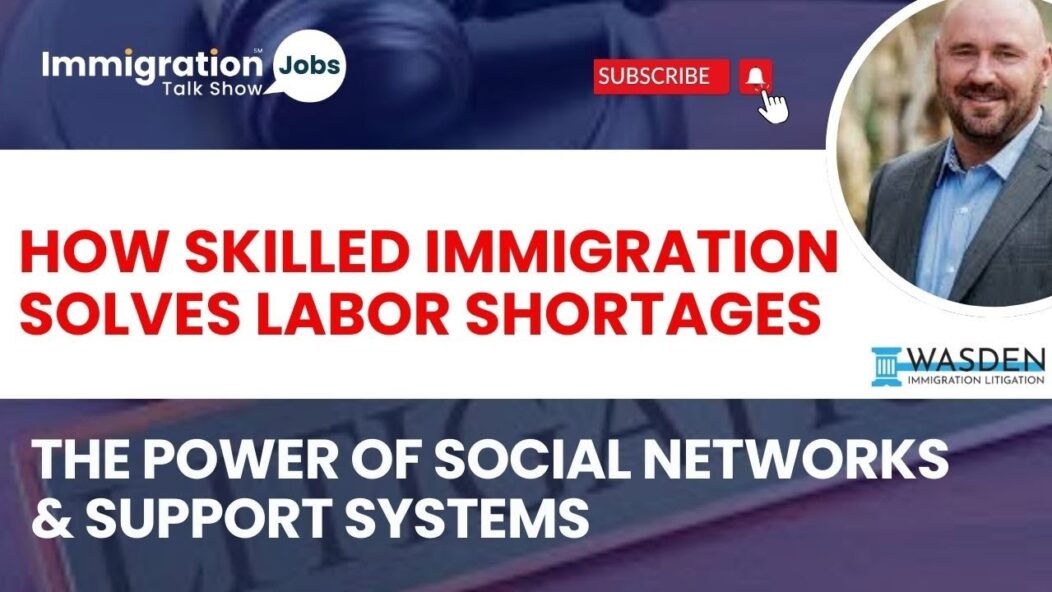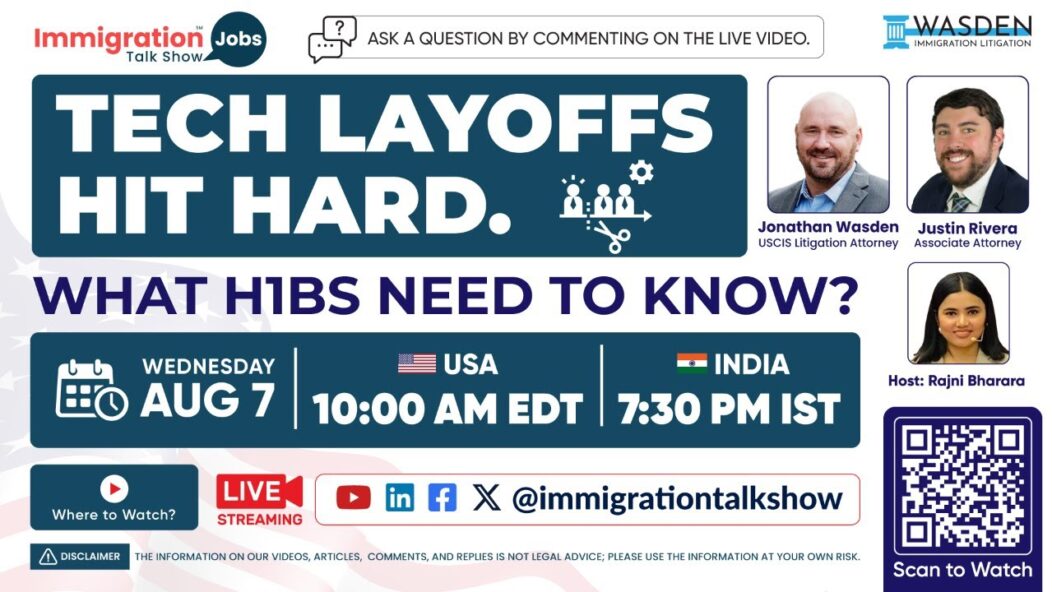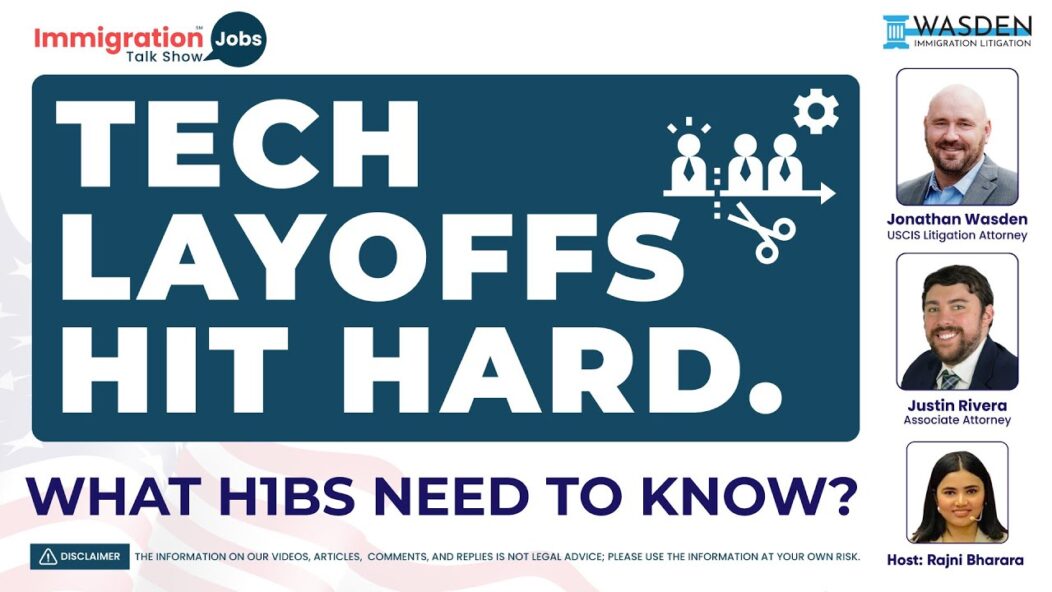A troubling trend is emerging among international students and professionals on F-1 and OPT visas in the U.S. – many are being flagged for misrepresentation or fraud, often without their knowledge. These flags, typically linked to associations with certain third-party OPT employers, can impact visa stamping, green card processing, and even reentry at U.S. borders. This article provides a full breakdown of what misrepresentation findings mean, how they show up in the system, and what individuals can do to protect themselves.
Key Takeaways
- Many immigrants on OPT or STEM OPT unknowingly face DHS flags for misrepresentation due to prior associations with “blacklisted” companies.
- Flags often appear during visa stamping, port-of-entry inspections, or green card processing – not at the time of employment.
- These records are rarely deleted; instead, annotations are added to clarify or override earlier fraud indicators.
- Affected individuals must prepare accurate documentation and consistently explain their past work history.
- Legal assistance is often necessary to understand, challenge, or clarify the implications of these records.
Context
Over the past several years, U.S. immigration authorities have increased scrutiny of OPT programs, especially cases involving certain third-party employers. These companies, often lacking real job placements, have been accused of offering fake projects or benching workers.
Students associated with these companies are sometimes flagged under INA §212(a)(6)(C)(i) for fraud or willful misrepresentation – without formal notification. The system’s opacity means many only discover they were flagged when facing visa denials or secondary inspections at airports.
The Silent Red Flag – When Misrepresentation Goes Undetected?
One of the most alarming realities is that individuals are often unaware they’ve been flagged. Since DHS does not always notify the person, the misrepresentation finding becomes apparent only when they:
- Apply for visa stamping at a consulate
- Attempt to reenter the U.S. after international travel
- Submit green card (I-485) or change-of-status applications
The finding may stem from previous OPT employment with companies flagged for fraudulent activity. Once flagged, applicants may face Form 221(g) administrative processing or outright visa refusals.
Misrepresentation flags often remain hidden until triggered during visa or status applications – leaving many blindsided.
How Fraud Flags Are Recorded and Interpreted?
The U.S. government shares fraud records across DHS, USCIS, CBP, Department of State, and DOL through interconnected databases like the Consular Consolidated Database (CCD). These databases may contain:
- Fraud flags entered by DHS
- Refusal notes from consular officers
- CBP inspection memos
Unfortunately, even if a fraud finding is later overturned or clarified, the original entry may remain in the system. Instead of deletion, a new annotation or “note” is added that clarifies the updated understanding – such as DHS stating they did not, in fact, find the individual guilty of misrepresentation.
Immigration systems retain records indefinitely, but clarifications can be added to correct or override past flags.
The Impact on Immigration Processes
These records have ripple effects across multiple areas:
- Visa stamping: Consular officers often refuse visas under Section 212(a)(6)(C)(i) if a fraud flag exists—even if the person previously entered the U.S. multiple times.
- Green card processing: USCIS may delay or request additional evidence (RFE) related to prior OPT employment, even if the fraud flag has been clarified.
- Port of entry: Travelers may be sent to secondary inspection, questioned, or denied entry based on the existing record.
Applicants must be prepared to explain past employment relationships truthfully and provide documents that confirm their version of events.
DHS fraud findings affect not only the present but also future immigration interactions – creating long-term consequences.
Documentation and Personal Declarations – The Key to Clarity
Since most students and workers have limited documentation from their OPT employers -especially in fraudulent arrangements—immigration advisors often recommend preparing a detailed personal declaration. This can include:
- A step-by-step timeline of recruitment, offer letter, and onboarding
- Any email communication with the company
- Evidence of attempts to request real work assignments or follow-ups
- Clarification of any mistaken employment claims
These declarations help tell a complete and honest story during visa interviews, adjustment-of-status filings, or consular reviews.
In the absence of traditional records, a clear and credible personal narrative becomes your strongest defense.
The Role of Legal Guidance in OPT Fraud Cases
Navigating a fraud finding, especially when undocumented, is extremely complex. Immigration lawyers can assist by:
- Reviewing government records (if accessible through FOIA or interviews)
- Advising on proper DS-160 and I-485 form responses
- Preparing applicants for secondary inspection questions
- Writing persuasive cover letters or declarations to submit with applications
- Intervening with CBP or consular officers when needed
Even applicants who haven’t yet encountered issues but suspect they may be flagged should consult an attorney proactively – before travel or visa renewal.
A skilled immigration lawyer is often the difference between approval and rejection when dealing with fraud-related flags.
What to Do If You Suspect You’ve Been Flagged?
If you were associated with a company later found to be blacklisted (e.g., Findream, Integra, Andwill, AZTech, Patico), consider the following steps:
- Request a FOIA: File a Freedom of Information Act request to USCIS, DHS, or CBP to obtain any records or flags under your name.
- Review past employment: Gather any documents or emails tied to that company.
- Avoid inconsistencies: Prepare consistent answers for all immigration forms and interviews.
- Stay honest: Never omit a prior visa denial or misrepresent your employment history.
- Seek legal help: If you’re unsure, consult a qualified attorney to analyze your situation.
If you have concerns about past OPT employers, act early, gather records, and prepare to defend your history with accuracy and truth.
Conclusion
The specter of OPT fraud flags is a growing concern for international students and workers in the U.S., particularly those who unknowingly associated with problematic companies. While these findings can disrupt careers and immigration plans, they are not a life sentence. With accurate documentation, consistency, and expert guidance, individuals can clear up confusion and move forward with confidence. In an increasingly automated and opaque system, proactive preparation is not optional—it’s essential.
Frequently Asked Questions (FAQs)
What is a fraud or misrepresentation flag in the immigration system?
It’s a government note suggesting that the individual may have lied or submitted fake information, often related to a prior OPT employer.
How do I know if I’ve been flagged?
You may only find out during visa stamping, reentry at the border, or via a Freedom of Information Act (FOIA) request.
Can these records be deleted?
Usually not. Instead, annotations are added to clarify or correct previous findings.
Will this affect my green card application?
Yes. USCIS may issue an RFE or deny your application unless you can clearly explain past employment and disprove any fraud assumptions.
What if I never had issues but worked for a blacklisted company?
It’s still possible you are flagged without your knowledge. You should consider legal consultation and FOIA request before traveling or applying for benefits.
Can I just answer “no” on visa forms if I haven’t been officially told about a fraud finding?
No. You must always answer truthfully about past visa refusals or denials – even if you disagree with the reason behind them.
Disclaimer
The information provided in this article is for general informational purposes only and does not constitute legal advice. While we strive to ensure the content is accurate and up to date, it is not a substitute for professional legal consultation. Immigration laws and regulations are subject to change, and their application can vary based on specific circumstances. We recommend scheduling a consultation with us to obtain advice tailored to your individual situation. The authors and publishers of this article are not responsible for any actions taken based on the information provided herein.
If you need Consultation, please visit our website https://wasden.law/
Authors: Jonathan Wasden & Justin Rivera, Immigration Attorneys
How useful was this post?
Click on a star to rate it!









